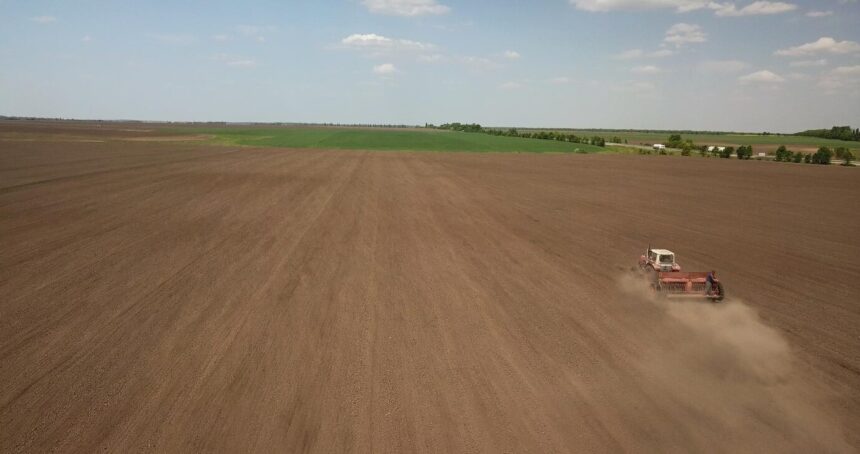Soil acidity is a common problem faced by many farmers and gardeners, particularly in areas with high rainfall or specific types of soil. When soil pH levels drop too low, plants struggle to absorb essential nutrients, leading to stunted growth and poor yields. Lime is an effective and widely used solution to raise the pH of acidic soils, making it more favorable for plant growth. This article provides a comprehensive guide on how to apply lime to acidic soils to improve soil health and ensure optimal plant performance.
1. Understanding Soil pH and Acidity
Soil pH is a measure of how acidic or alkaline the soil is, with a scale ranging from 0 to 14. A pH of 7 is considered neutral, while values below 7 indicate acidity and those above 7 indicate alkalinity. Acidic soils typically have a pH below 6, which can hinder plant growth by causing nutrient imbalances, especially in essential nutrients like nitrogen, phosphorus, and potassium.
Lime, specifically agricultural lime (calcium carbonate), is commonly used to raise the pH of acidic soils. It neutralizes excess acidity, promoting healthier root development, improving nutrient availability, and enhancing microbial activity in the soil.
2. Testing Soil pH
Before applying lime, it’s essential to test the soil’s pH to determine the level of acidity and how much lime is needed. Soil pH testing kits are widely available at garden centers or through agricultural extension services. Testing involves taking soil samples from different areas of your garden or field, mixing them, and sending the sample to a laboratory for analysis.
If the soil pH is below 6, it is considered acidic and may benefit from lime application. Soil testing will also provide you with recommendations on the appropriate amount of lime to apply based on your soil’s specific needs.
3. Determining the Right Amount of Lime
The amount of lime required depends on several factors, including the current soil pH, the type of soil, and the desired pH level. A general guideline is:
- For soils with a pH of 5.5 to 6.0, apply 2 to 3 tons of lime per hectare.
- For soils with a pH of 5.0 to 5.5, apply 3 to 4 tons of lime per hectare.
- For soils with a pH below 5.0, apply 4 to 6 tons of lime per hectare.
However, soil texture plays a role in lime application. Clay soils may require more lime than sandy soils because clay particles retain more acidity. Additionally, the type of lime used (such as ground limestone or dolomitic lime) can also affect the amount needed.
4. Choosing the Right Type of Lime
There are different types of lime available for soil amendment, and selecting the right one is crucial for effective pH adjustment. The two most common types are:
- Calcitic Lime: This is pure calcium carbonate and is suitable for soils that need calcium to improve structure and fertility.
- Dolomitic Lime: This contains both calcium carbonate and magnesium carbonate and is ideal for soils deficient in magnesium.
For soils that are both acidic and magnesium-deficient, dolomitic lime is often recommended. If magnesium levels are adequate, calcitic lime is usually sufficient.
5. Timing of Lime Application
The timing of lime application can significantly influence its effectiveness. It’s best to apply lime well in advance of planting, as it can take several months for the lime to fully react with the soil and raise the pH. Ideally, lime should be applied in the fall or early winter, allowing it time to work before the next growing season.
If you are planting in the spring, aim to apply lime at least a few months prior to planting. Avoid applying lime during wet conditions, as excessive moisture can cause it to leach away before it has a chance to act on the soil.
6. Application Methods
There are two main methods for applying lime to acidic soils:
- Broadcast Spreading: This is the most common method, where lime is spread evenly over the soil using a broadcast spreader. This method is suitable for large areas and is effective for ensuring uniform coverage. After applying, the soil should be lightly tilled to mix the lime into the topsoil, where it can begin to neutralize acidity.
- Incorporating into Soil: For smaller areas or garden beds, lime can be manually spread and then worked into the soil with a rake or garden hoe. This method is ideal for raised beds or smaller vegetable gardens, as it allows for more precise application.
In both cases, ensure that the lime is spread evenly to avoid areas with overly high or low pH.
7. Monitoring and Maintenance
After applying lime, it’s important to monitor the soil’s pH regularly to ensure that it is within the optimal range for plant growth (typically a pH of 6.0 to 7.0 for most plants). If necessary, additional applications of lime can be made, but it is essential to wait several months between applications to avoid over-liming.
Remember that lime’s effects are gradual, and results may not be immediately visible. However, after several months, you should notice improvements in plant health, with better nutrient availability and more robust growth.
8. Precautions and Considerations
While lime is a beneficial soil amendment, it is essential to avoid over-application. Excess lime can raise the pH too much, causing the soil to become alkaline and leading to nutrient deficiencies, particularly of iron, manganese, and phosphorus. Always follow soil test recommendations to ensure proper lime usage.
Additionally, lime should be handled with care. Wear gloves and protective clothing when applying lime to avoid skin irritation, and ensure that the lime is stored in a dry, cool place.
Applying lime to acidic soils is a straightforward and effective way to improve soil health and promote better plant growth. By raising the pH of acidic soils, lime enhances nutrient availability, improves soil structure, and supports healthy root development. To achieve the best results, it is essential to test your soil, choose the right type and amount of lime, apply it at the appropriate time, and monitor soil conditions regularly. With proper lime application, you can transform acidic soils into fertile ground for thriving plants and successful harvests.
Join 'Farmers Mag' WhatsApp Channel
Get the latest Farming news and tips delivered straight to your WhatsApp
CLICK HERE TO JOIN






